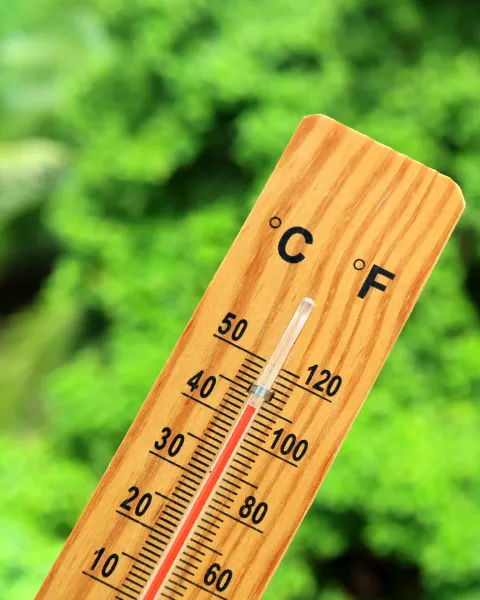Related links:
- Maryland Heat Stress Illness Prevention Standard
- Heat Stress - Maryland Occupational Safety and Health (MOSH)
Maryland Occupational Safety and Health (MOSH) has issued its long-awaited heat stress standards. Maryland employers need to pay careful attention to these new standards.
MOSH also issued information and guidance, which includes heat standards and education from other OSHA state plans, such as California, Oregon, and Washington.
Covered Employers
The bill (HB 722 2020) defines covered employers as those with employees whose work activities, indoor or outdoor, expose employees to a heat index in the area where the employee is working that equals or exceeds 80 degrees Fahrenheit.
Excluded are:
- Emergency operations (emergency responders and utility providers responding to emergencies should review for specific applicability);
- Incidental exposures (when an employee performs work activities for less than 15 consecutive minutes per hour); and
- Buildings, structures, and vehicles that have a mechanical ventilation system or fan that maintains the heat index below 80 degrees Fahrenheit.
Covered employers throughout Maryland must monitor the heat index where employees perform work using prescribed methods throughout the work shift. Additionally, when employees work in buildings and structures that do not have a mechanical ventilation system, employers must directly measure the temperature and humidity at the same time and location where employees perform work.
Written Plans
Employers with employees who are exposed to heat at or above 80 degrees Fahrenheit must develop, implement, and maintain an effective written heat-related illness prevention and management plan. The written plan must be made available and accessible to employees and to MOSH upon request.
The plan requirements are detailed and must include, among other provisions:
- How sufficient amounts of cool, clean drinking water will be provided;
- How to recognize the symptoms of heat-related illness, including heat exhaustion and heat stroke;
- How to respond to suspected heat-related illness, including heat exhaustion and heat stroke;
- How employees will be provided with sufficient time and space to rest in shaded or cool, climate-controlled areas to cool off;
- How the employer will implement rest break schedules as necessary; and
- The emergency response plan.
There are additional, important provisions regarding heat acclimatization and employee training.
Employers must implement additional requirements when temperatures rise to high heat conditions (90–99 degrees Fahrenheit) and more still when temperatures exceed 100 degrees Fahrenheit. High heat procedures should include:
- A minimum rest period of 10 minutes for every two hours worked;
- A minimum rest period of 15 minutes for every hour worked where employees are exposed to a heat index above 100 degrees Fahrenheit; and
- Monitoring employees for signs of heat-related illness through regular communications.
Employers must also include and implement a written emergency response plan that contains the following:
- Procedures for ensuring effective and accessible means of communication at all times at the worksite to enable an employee to contact a supervisor or emergency medical services;
- Procedures for responding to signs and symptoms of possible heat-related illness in employees;
- Procedures for monitoring and providing care to employees who are exhibiting symptoms of heat-related illness; and
- Procedures for contacting emergency medical services and, if necessary, transporting employees to a location accessible to emergency medical services.
Maryland employers should review the new requirements, evaluate their methods for monitoring heat in both indoor and outdoor work settings, develop their heat illness prevention plans, and provide training to employees to ensure compliance.
Jackson Lewis has a dedicated team of safety and health attorneys who can assist in addressing employer questions on the new standards and preparing compliant plans and training programs.
To learn more, or if you need compliance assistance related to heat injury and illness prevention or defense of an OSHA inspection or citations, please contact a member of the Workplace Safety and Health practice group or the Jackson Lewis attorney with whom you regularly work.
© Jackson Lewis P.C. This material is provided for informational purposes only. It is not intended to constitute legal advice nor does it create a client-lawyer relationship between Jackson Lewis and any recipient. Recipients should consult with counsel before taking any actions based on the information contained within this material. This material may be considered attorney advertising in some jurisdictions. Prior results do not guarantee a similar outcome.
Focused on employment and labor law since 1958, Jackson Lewis P.C.’s 1,100+ attorneys located in major cities nationwide consistently identify and respond to new ways workplace law intersects business. We help employers develop proactive strategies, strong policies and business-oriented solutions to cultivate high-functioning workforces that are engaged and stable, and share our clients’ goals to emphasize belonging and respect for the contributions of every employee. For more information, visit https://www.jacksonlewis.com.




